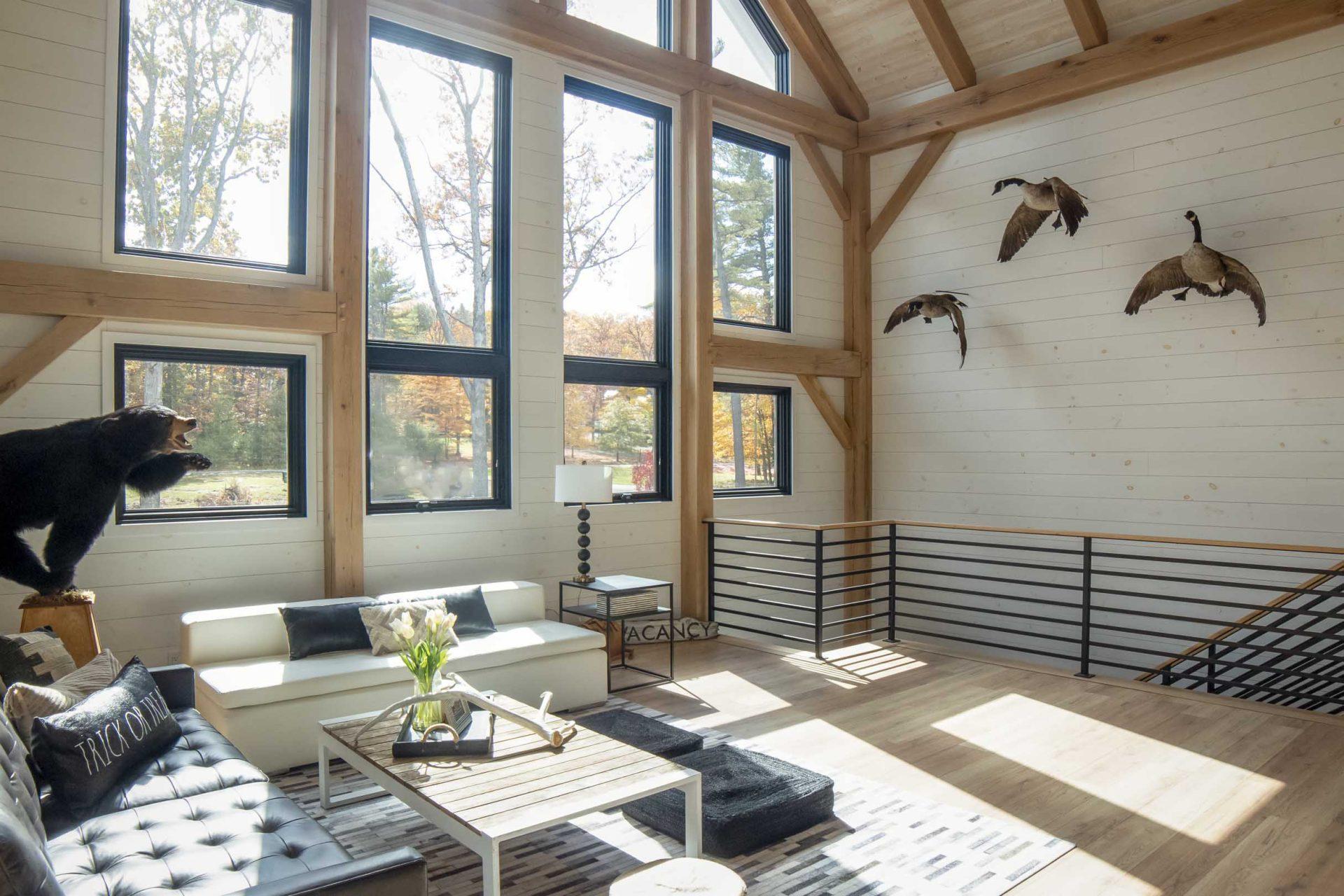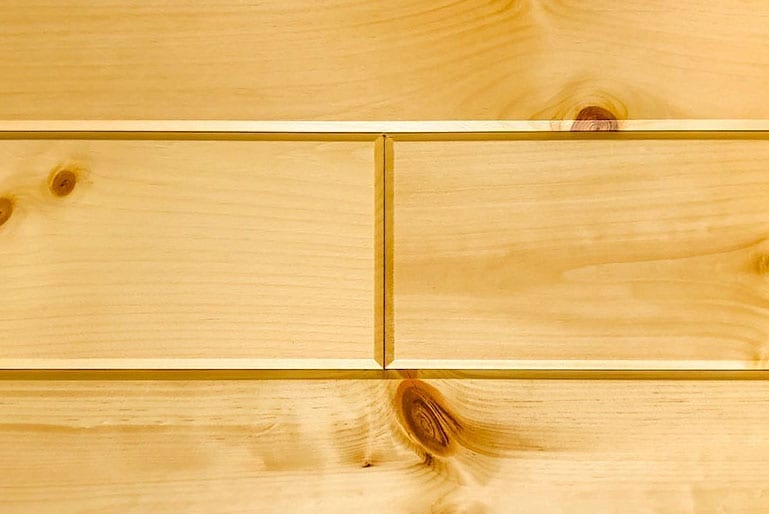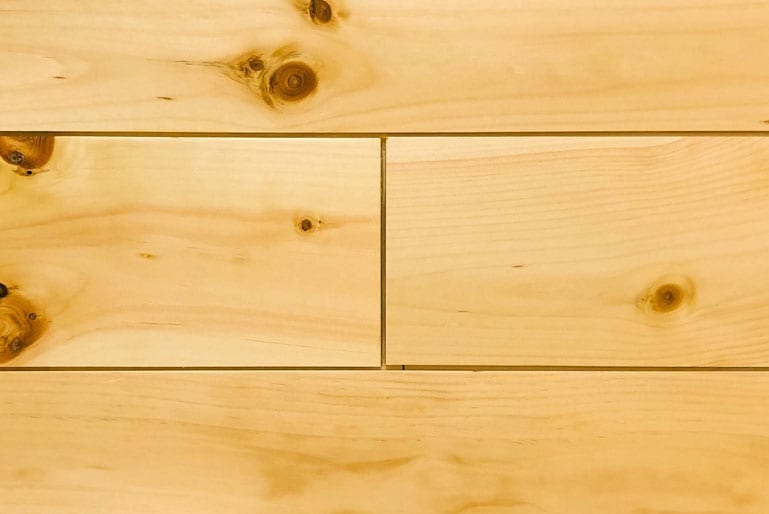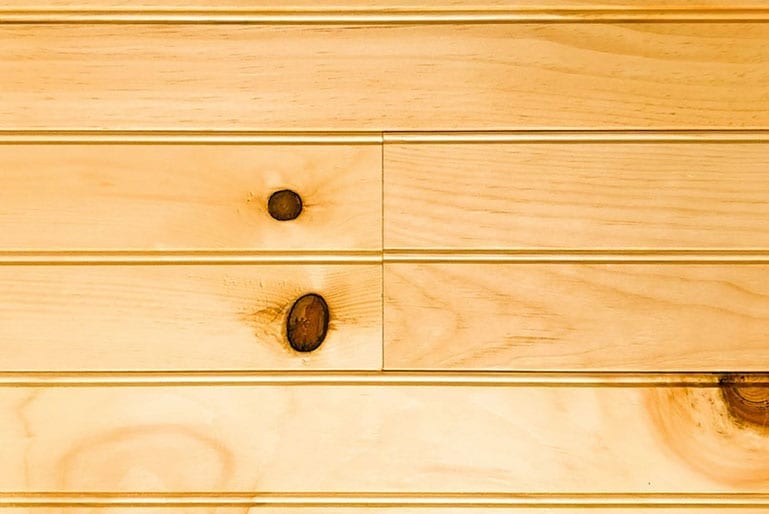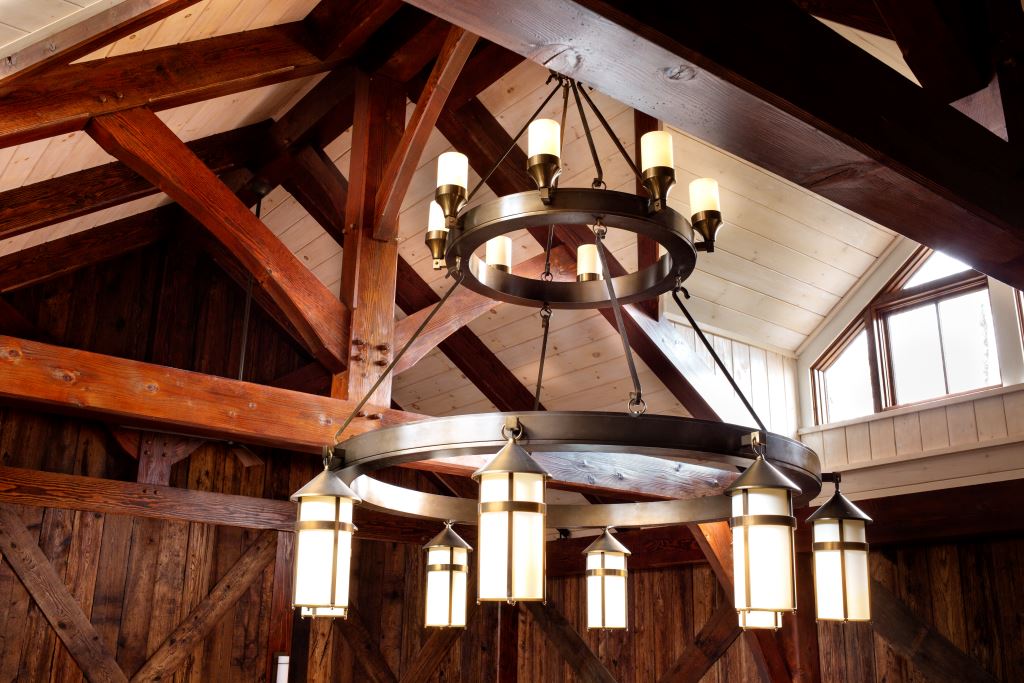Here’s what to know about tongue and groove, nickel gap and shiplap paneling.
Wherever you are in your custom timber frame home journey, you’ve likely been thinking about the stylistic specifics that polish the look and pull your home’s design together. For interior walls, Woodhouse’s standard is MoldTough™ gypsum board over the rafters and on the walls. However, a client may also opt for wood cladding. After all, wood is a natural fit for a rustic appearance, but with the right details it can also take on a modern, coastal, traditional, or farmhouse aesthetic, among many more.
The selection of wood cladding increases the cost of the Woodhouse package price, as wood cladding is more expensive than gypsum board. However, in the long run, it’s likely that the selection of wood cladding will provide cost savings, as the cost of finishing (spackle, sanding, priming, painting) the gypsum board is more than finishing the wood (particularly if the wood cladding is pre-finished prior to installation).
But, with such variety when it comes to the types of cladding used for ceilings, and occasionally walls, how do you decide? Do you want tongue and groove, shiplap paneling, or nickel gap? What are the differences? Are there other options? The answers to these questions will help you make the best choice for your timber frame home, so let’s dive in:
Tongue & Groove
The name tongue and groove describes how the pieces of wood connect. There is a tongue portion on one side and a groove on the other. The groove receives the tongue and locks the adjoining piece into place. The interlocking nature of tongue and groove gives this type of wood structural strength and durability. The downside is that it is slightly labor intensive to install because each board must be nailed into place. When boards are 6-8 inches wide, it’s a process that can take a little bit of time.
Tongue and groove comes in many variations depending on the profile cut, which determines the pattern. One of the most popular options is what’s known as a “V-groove” pattern with 6-inch-wide boards. A premium version goes up to 8-inch-wide boards.
“Many of our projects use tongue and groove wood cladding above the rafters,” explains Woodhouse Project Coordinator, Todd Davey. “Many people opt for sheetrock walls and tongue and groove ceilings, though we can do whatever a customer prefers. When you put tongue and groove everywhere, it creates a very rustic, very cabin feel.”
Shiplap Paneling & Nickel Gap
Traditionally, shiplap paneling is made by one board overlaying another one without the tongue or groove. As a result, it doesn’t interlock and is not as structurally strong as tongue and groove. Without the tongue and groove, overlayed shiplap boards can be more prone to warping and buckling over time.
“Shiplap is a purely decorative wood option,” Todd explains. “Tongue and groove can hold itself up between the rafters, whereas shiplap paneling cannot do that.”
What about “nickel gap”? Nickel gap is shiplap with nickel-sized gaps, about 1/8 inches. Shiplap can be wider, but when you think of a classic shiplap panel, it’s usually always going to be nickel gap shiplap.
Part of shiplap’s appeal is its simplicity. Nails are hidden and the gaps give the illusion of the boards floating, individually against the wall. The square edges and clean lines of nickel gap shiplap is a great choice for those who want a more contemporary appearance.
“With shiplap, people trend to more natural finishes and whitewashes,” Todd says. “Stonewash has been very popular.”
The combination of a white-washed stain and shiplap’s crisp lines make a stunning contrast with timber posts and beams that brighten up any interior.
Tongue & Groove Shiplap
Now that you have a clear understanding between tongue and groove, shiplap paneling, and nickel gap it’s time to introduce you to another version. Earlier, we mentioned that because shiplap is simply overlaid and not locked into place, it lacks the structural integrity of tongue and groove.
At Woodhouse, we use shiplap that is constructed with tongue and groove, bringing you the best of both! Instead of a V-groove pattern, we use a straight-edge pattern that delivers the shiplap look, but with a tongue and groove construction.
We also offer tongue and groove in an edge and center bead pattern. The beading is excellent for traditional wainscoting and adds an extra touch for ceilings and wall paneling. Think clubhouses or an old-school den filled with linen-bound books and leather furniture.
Countless Options
In addition to different tongue and groove patterns, you can choose different wood species as well as surface treatments. At Woodhouse, the standard species is eastern white pine, however, many options are available. We can work with you to find the right fit for your style, function, and budget. For surface treatments, there are classic and timeless smooth boards. Circular sawn boards create a reclaimed barnwood finish while boards cut with a bandsaw assert a rugged, rustic appearance. You can have any color stain you wish, but to make it easy we have nine different pre-finished stains in everything from clear to copper, stone, driftwood, farmhouse glaze, blue stain, and more. A pre-finished stain is a more efficient (and more affordable) option.
Browse our gallery to see how distinct interior cladding adds just the right touch to a rich array of timber frame home designs. Contact us for a conversation about all the details that will make your timber frame home sing with style!
